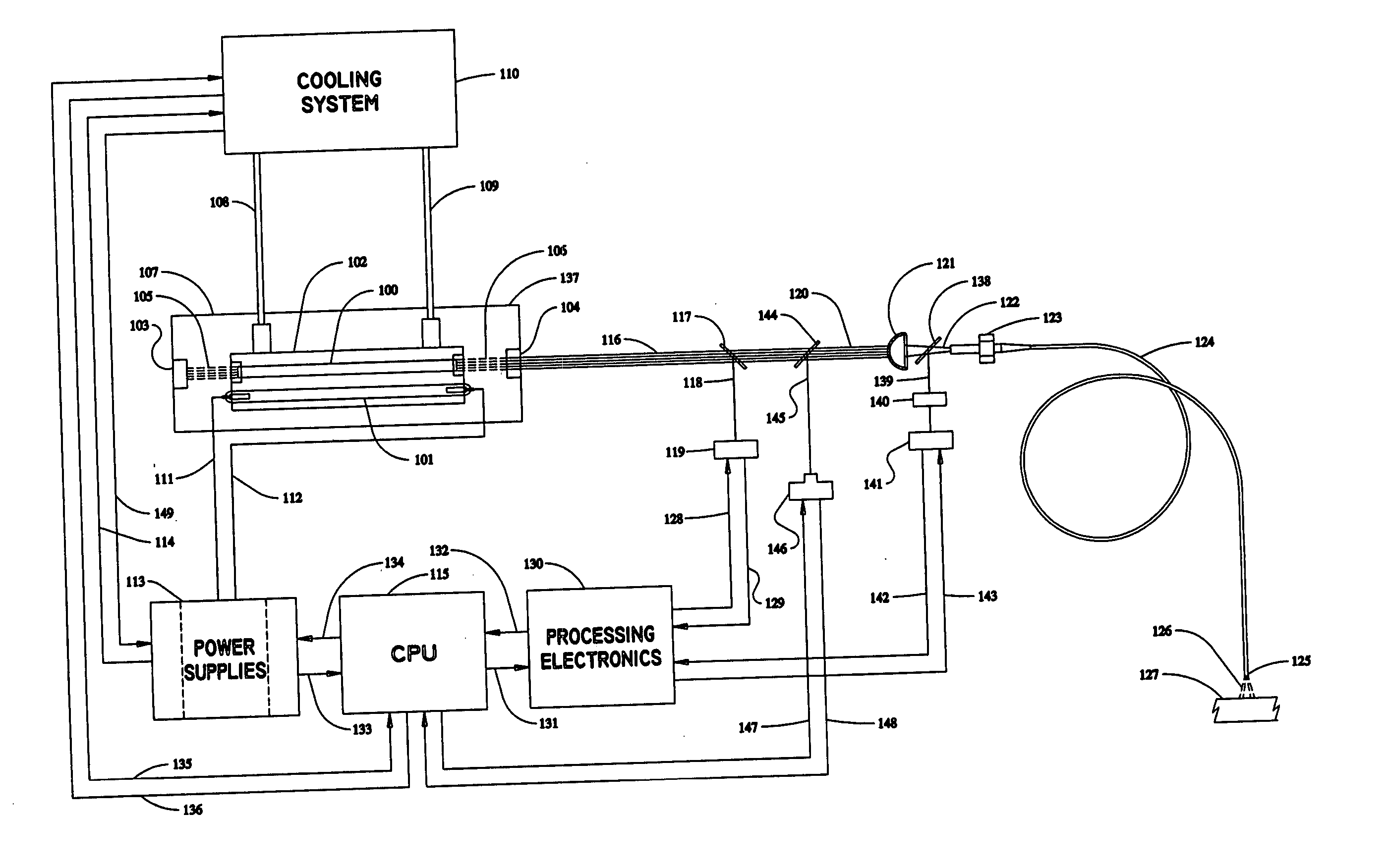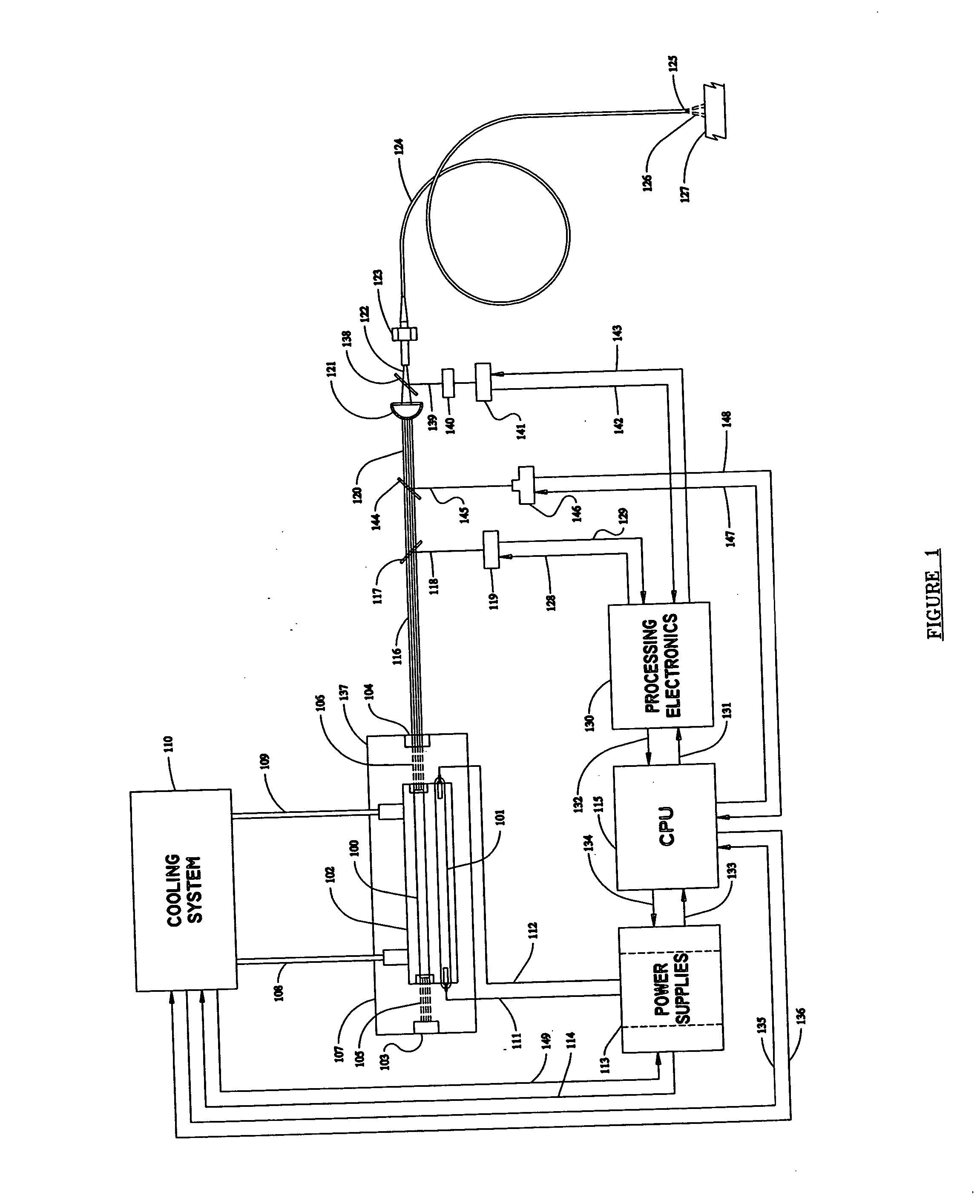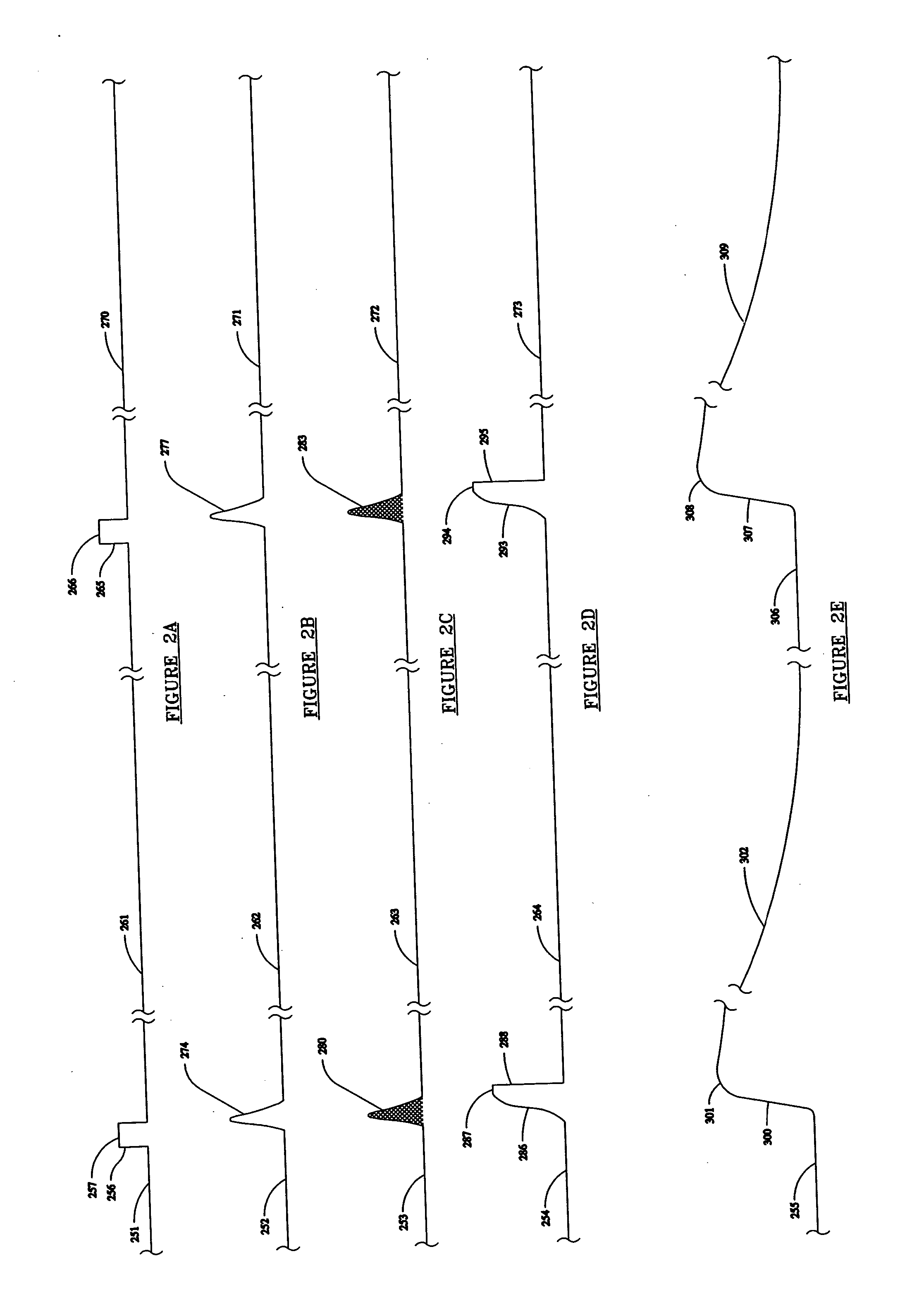Generation of efficient solid-state laser pulse trains
a laser pulse and solid-state technology, applied in the direction of manufacturing tools, active medium materials, therapy, etc., can solve the problems of premature component failure, difficult or impossible production of such high energy levels with a single laser resonator or oscillator,
- Summary
- Abstract
- Description
- Claims
- Application Information
AI Technical Summary
Benefits of technology
Problems solved by technology
Method used
Image
Examples
Embodiment Construction
[0034] The present invention provides an improved laser system and method for the generation and application of laser pulse trains using selected solid-state lasing media that is especially suitable for use in surgery and other medical, veterinary, industrial, and scientific applications. Existing laser systems may utilize multiple laser resonators, oscillators, or fiber amplifiers combined into one or more output beams, using means previously disclosed in the art, such as described in co-owned U.S. Pat. No. 5,387,211 to Saadatmanesh, et al.
[0035] The present invention provides substantially the same effect as described in U.S. Pat. No. 5,387,211 with only one laser resonator, oscillator, or fiber amplifier and one output beam, although the present invention may be used in combination with the invention described in the aforementioned U.S. Pat. No. 5,387,211. The laser system can efficiently generate and deliver multiple laser pulses in a pulse grouping within a relatively short ti...
PUM
| Property | Measurement | Unit |
|---|---|---|
| Time | aaaaa | aaaaa |
| Time | aaaaa | aaaaa |
| Time | aaaaa | aaaaa |
Abstract
Description
Claims
Application Information
 Login to View More
Login to View More - R&D
- Intellectual Property
- Life Sciences
- Materials
- Tech Scout
- Unparalleled Data Quality
- Higher Quality Content
- 60% Fewer Hallucinations
Browse by: Latest US Patents, China's latest patents, Technical Efficacy Thesaurus, Application Domain, Technology Topic, Popular Technical Reports.
© 2025 PatSnap. All rights reserved.Legal|Privacy policy|Modern Slavery Act Transparency Statement|Sitemap|About US| Contact US: help@patsnap.com



